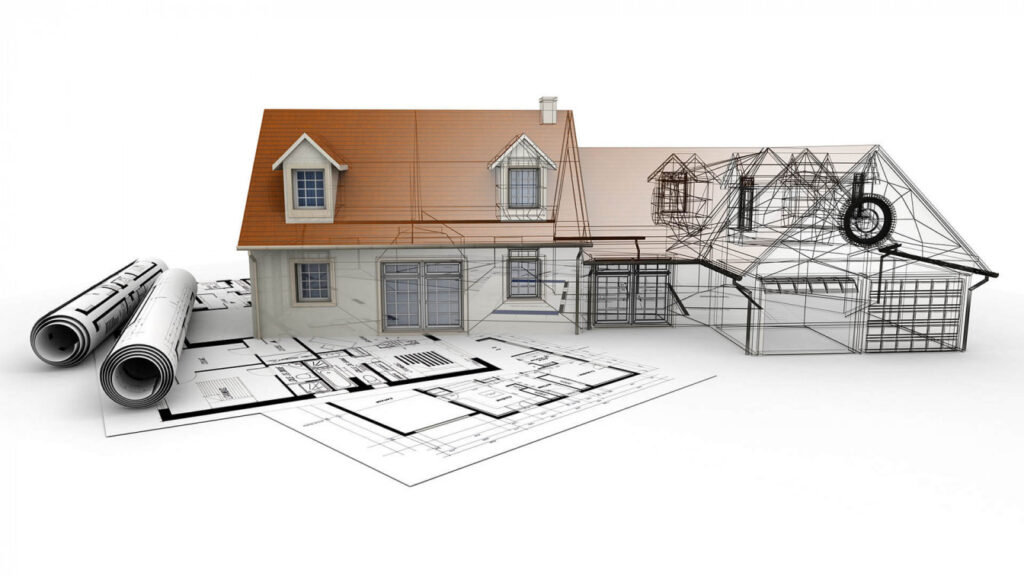The roofing structure of a building plays a crucial role in energy efficiency, particularly in regions where the climate is hot and dry. The roof is the first defence against harsh sunlight and high temperatures in such areas. A well-designed roof structure can reduce energy costs, increase comfort levels, and minimize the external environment’s impact on a building’s internal environment.
When maximizing energy efficiency, choosing the right roof structures is essential. The roofing structures should be designed to minimize heat gain and maximize heat loss, depending on the specific needs of the building. Several factors must be considered when choosing the right roof structures, including the type of building, the local climate, and the materials used. A well-designed roof structure can not energy and reduce costs but increase the overall lifespan of the building.
This article will discuss the factors that must be considered when choosing the right roofing structure for energy efficiency. We will also explore some of the different roof structures available and the benefits and drawbacks of each. By the end of this article, you should better understand choosing the right roofing structure for your building to maximize energy efficiency.
Importance of Roofing Structure for Energy Efficiency:
The importance of the roofing structure for energy efficiency cannot be overstated. Choosing the right roof structures can be one of the most important decisions when maximizing energy efficiency in your home or building. A proper roofing structure can significantly decrease your energy consumption and costs by reducing heat gain and loss.
A well-designed roofing structure should consider factors such as the climate in your area, the direction your roof faces, and the materials used. For example, in hot climates, it’s important to have a roof that reflects heat and allows for ventilation to prevent heat buildup. In colder climates, insulation is key to preventing heat loss. Using sustainable and energy-efficient roofing materials such as metal or reflective coatings can contribute to a more energy-efficient roofing structure. By reducing energy consumption and costs, a proper roof structures benefits the environment and your wallet.

In conclusion, selecting the right roofing structure is crucial for maximizing energy efficiency in your home or building. By considering climate, direction, and materials, you can significantly reduce energy consumption and costs while contributing to a more sustainable future.
Types of Roofing Structures for Energy Efficiency:
Various types of roofing structures can help in maximizing energy efficiency. Here are some of them:
Green Roofs:
Also known as vegetative or eco-roofs, green roofs are covered with vegetation and provide numerous benefits, including reducing the urban heat island effect, improving air quality, and reducing energy consumption by providing natural insulation.
White or Reflective Roofs:
These roofs are designed to reflect sunlight and absorb less heat, resulting in lower energy costs for air conditioning. They are often made of white TPO, PVC, or EPDM.
Metal Roofs:
Metal roofs are highly durable and can last for several decades. They are also highly reflective, reducing the amount of heat absorbed by the building and lowering energy consumption.
Clay or Concrete Tile Roofs:
These roofing materials effectively reduce heat transfer and provide insulation, resulting in lower energy costs.
Asphalt Shingle Roofs:
While not as effective as the other roofing structures, asphalt shingle roofs can still provide energy efficiency if installed properly with proper ventilation.
Choosing the right roof structures can greatly maximize energy efficiency and reduce costs. When selecting a roofing structures, it is important to consider the climate and environment in which the building is located, as well as the building’s energy needs and budget.
Factors to Consider When Choosing a Roofing Structure:
When choosing a roofing structures, several factors must be considered sure that you select the right one for your building. These factors include:
Climate:
Consider the climate in your region when choosing a roofing structures. If you live in an area with high winds, choose a roof structures that can withstand strong winds. Similarly, if you live in an area with heavy snowfall, choose a roofing structures that can handle the weight of the snow.
Building Type:
The type of building also affects the type of roofing structure you choose. For instance, if you have a flat roof, you will need a roof structures designed for flat roofs. Similarly, if you have a steep roof, you will need a roofing structures that can handle the slope.
Budget:
Your budget also plays a crucial role in determining the type of roofing structure you can choose. While some roof structures are more expensive, they offer better quality and durability.
Energy Efficiency:
Choose a roofing structures that is energy-efficient to help reduce your energy bills. A reflective roof structure can help reduce the heat absorbed by your building, reducing the need for air conditioning.
Consider these factors when choosing a roof structure to ensure you select the right one for your building.

Conclusion:
In conclusion, the right roofing structure can greatly impact the energy efficiency of a building. Building owners and managers can make informed decisions that will lead to long-term savings and a more sustainable future by considering factors such as material, colour, ventilation, insulation, and design. Metal roofs, cool roofs, and green roofs are all effective options for improving energy efficiency and reducing the carbon footprint of a building.
However, it is important to note that the ideal roof structure will vary depending on climate, building size, and budget. It is recommended that building owners and managers consult with roofing professionals and conduct thorough research before making a final decision. By investing in the right roof structures, buildings can save money on energy costs and contribute to a healthier environment for current and future generations.
Read More: Investing in gold vs. real estate: Which is better?